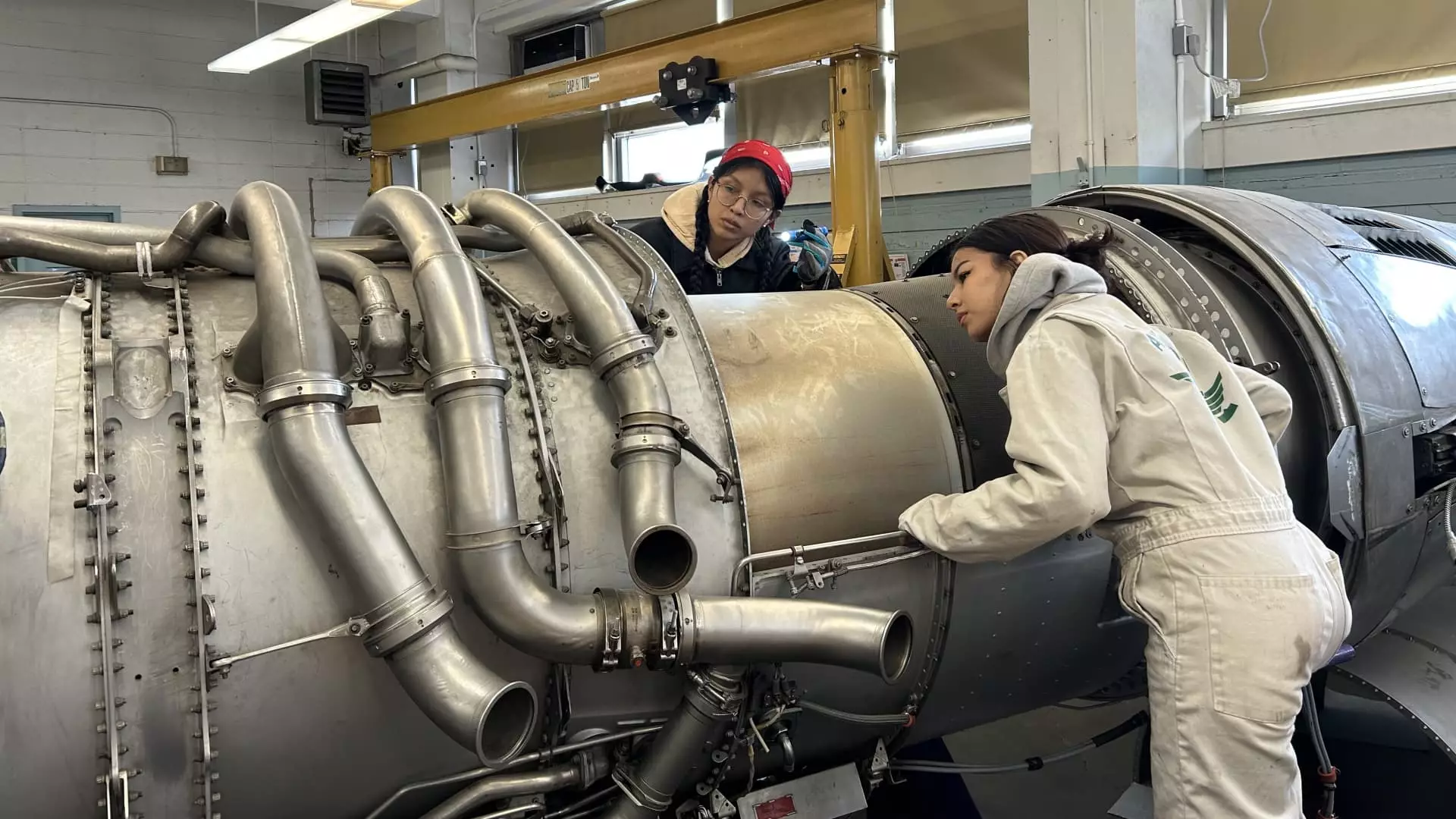As President Donald Trump championed the revitalization of manufacturing jobs in the United States, a silent crisis has been brewing in the aviation industry, overshadowed by grand narratives of economic resurrection. The hard truth is that the average age of a certified aircraft mechanic is creeping towards 55, with 40% of these skilled workers nearing retirement age. This alarming statistic emerges from a joint 2024 report by the Aviation Technician Education Council and consulting firm Oliver Wyman, which draws upon Federal Aviation Administration data. By 2028, the United States is projected to face a staggering shortfall of 25,000 aircraft technicians. Such figures signal a workforce predicament that could cripple an industry vital to the nation’s economy and safety.
The aviation sector should not be merely viewed through the lens of cash flows and profit margins; it is a complex ecosystem reliant on the expertise of its workforce. As American Airlines’ Chief Operating Officer David Seymour aptly noted, many technicians were hired during the 1980s and early 1990s. Thus, the industry’s impending talent drain isn’t just a blip — it is a seismic shift that could erode the foundational strength of American aviation. Even before the pandemic, the aerospace world was beginning to face an aging workforce crisis. The COVID-19 pandemic acted as a catalyst, exacerbating the situation as companies cut jobs or offered buyouts, leading to a rapid exodus of seasoned professionals who might never return.
Attempts at Revitalization Amid Restrictions
Airlines and major aircraft manufacturers are scrambling to attract younger individuals to fill these crucial roles, yet the task proves daunting. The pandemic had wiped the slate clean; businesses faced a sudden halt in demand for air travel and, consequently, aircraft services. Christian Meisner, GE Aerospace’s Chief Human Resources Officer, captured the situation aptly when he indicated that the industry lost an invaluable talent pool during this abrupt shift from growth to stagnation. Now, as airlines attempt to reclaim lost ground, they find themselves issuing calls for employees amidst a backdrop filled with uncertainty.
While the aviation sector offers lucrative salaries—often reaching $130,000 for technicians at top scales—the allure of these positions is undermined by a pervasive perception of the industry as stagnant or overly traditional. “People forget aviation careers aren’t what they used to be; they are high-tech now,” Meisner states. However, without a steady influx of younger workers, the industry risks stagnation in the face of higher demand for air travel.
Additionally, the looming shortage of technicians is not an isolated issue. The lack of air traffic controllers also threatens the safety and efficiency of air travel, which has further implications for economic growth. The reluctance to streamline hiring processes exacerbates the issue, leaving essential roles unfilled and endangering safety.
Geographic Barriers and Wage Disparities
Ironically, while the aviation industry is highly esteemed in American consciousness, the challenges it faces include geographic immobility among its prospective workers. Gordon Hanson, a professor at Harvard University, points out that the concentration of manufacturing employment does not guarantee a nimble workforce; many workers may be tied to their localities and unable to relocate—or unwilling to uproot their lives. This represents both a cultural and systemic barrier as businesses grapple with attracting talent from under leveraged regions.
Even though wages in aviation jobs have seen an upward trend due to short supplies of skilled workers, advocates argue these may not be sufficient to attract new talent. Sarah MacLeod, executive director of the Aeronautical Repair Station Association, aptly warns that the skills crisis will resonate far beyond aviation; the shortage will touch various industries, including housing and technology. With such dire forecasts, it seems critical that the industry not only increases pay but innovates its actual work conditions, fostering an environment that resonates with younger generations.
A New Generation Stepping Up to the Plate
Amidst this impending crises, there emerges a glimmer of hope from unexpected sources. Many high school programs, like Aviation High School in Queens, New York, are successfully inspiring students to pursue careers in aviation, often offering FAA licensing opportunities as part of their curricula. Students like Sam Mucciardi are even considering bypassing traditional college routes to dive straight into aviation roles. With over 5,000 applications received for a limited number of spots in these specialized programs, it’s evident that interest in aviation jobs is bubbling beneath the surface.
Educators and industry leaders must capitalize on this momentum, fostering awareness early on about the opportunities within aviation. As companies like American Airlines develop partnerships with educational institutions, there is potential for reshaping the industry’s image. By embracing new technologies and demonstrating the critical impact of skilled technicians, the aviation sector can credibly advertise itself as a high-tech frontier, directly counteracting stigmas of the past.
The “Choose Aerospace” initiative to attract students at even younger ages signals an evolving landscape, signifying a shift from outdated narratives that don’t resonate with today’s youth. More than ever, positions in aviation could become sought-after jobs not just for the financial rewards, but for the opportunity to contribute meaningfully to an industry that admires precision, safety, and innovation.

